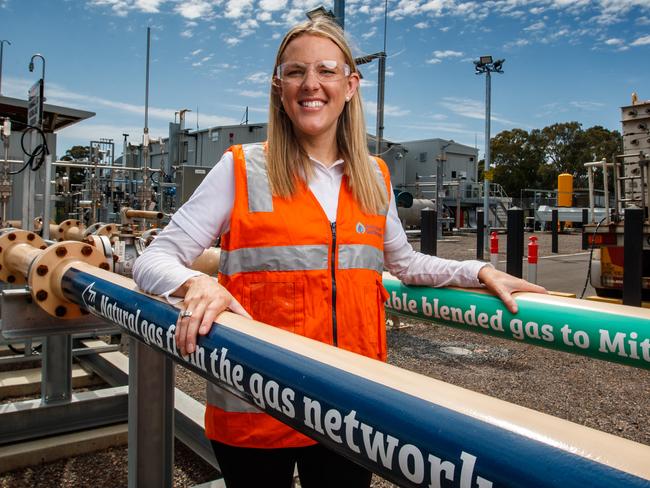How SA is making hydrogen, climate-friendly fuel in Tonsley that could lead to more jobs
An experiment in South Australia could lead to a new market of jobs, where locals make climate-friendly fuel to modernise things like steelmaking.
Environment
Don't miss out on the headlines from Environment. Followed categories will be added to My News.
Thousands of jobs hinge on an experiment underway in the Tonsley precinct where Australians once made Mitsubishi and Chrysler cars.
It also will help determine the fate of billions of dollars of capital Australians have invested over generations.
The experiment is the first step in transforming gas supply to homes from natural gas to hydrogen and providing a climate-friendly fuel to modernise manufacturing processes like steelmaking.

Natural gas is mostly methane and causes carbon-dioxide pollution when burned, whereas hydrogen only makes heat and water vapour.
“Hydrogen will be an incredible part of Australia’s jobs and growth,” Australian Gas Infrastructure Group’s head of strategy and innovation Kristin Raman said.
“It will deliver for the domestic market – including renewable electricity generation – and create exports.”
The company owns Hydrogen Park SA (HyP SA), in the Tonsley innovation district, where the largest electrolyser in the southern hemisphere has been installed.
It uses cheap electricity generated by renewable sources of solar and wind to split water into hydrogen and oxygen.
Since May, a 5 per cent mix of hydrogen has been added to gas piped to more than 700 homes in Mitchell Park.
Hydrogen is also sent by trailer to the Whyalla steelworks for welding.
Ms Raman points out Australia already has a gas industry workforce with highly advanced skills and abilities, people ideally suited to working in hydrogen.
“It’s not necessarily about new skills, they already know how to handle gas, transport it, use it and maintain the infrastructure – it’s just about seizing the opportunities,” she said.
“We can repurpose our existing networks, using plastic pipes, to take hydrogen.”
AGIG is now constructing a similar plant in Gladstone, Queensland, and will use these pilot projects to iron out any technical issues.

So far, there have been no complaints – only enthusiasm – from Mitchell Park residents.
“We have Australia’s largest gas network and our customers are telling us they want a renewable product,” she said.
“We want to have 10 per cent hydrogen by 2030.
“And for new housing developments, we want to offer 100 per cent by 2025.”
AGIG chief executive Ben Wilson has set a target of 2040 for all its network to carry 100 per cent hydrogen.
“HyP SA is a globally significant project,” he said.
“This is not an innovation project in a sandbox that gets dismantled after 18 months, this is here to stay.
“It is the start of our journey, we are ambitious, we recognise the importance of decarbonisation, we recognise the importance of getting to net zero by 2050.”
For more on this series go to: www.missionzero2050.com.au
Share your feedback or story: missionzero2050@news.com.au
More Coverage
Originally published as How SA is making hydrogen, climate-friendly fuel in Tonsley that could lead to more jobs




